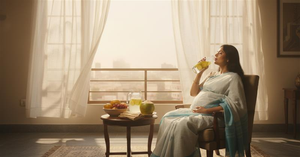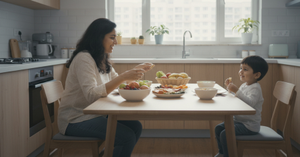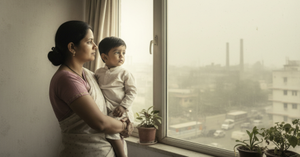Dealing with kids' hair can sometimes feel like trying to tame a wild beast. One day, their locks are silky smooth, and the next, they look like they stuck their finger in an electrical socket. Whether you're wrestling with a toddler who thinks shampoo is lava or negotiating with a teenager who believes dry shampoo counts as actual washing, the hair hygiene journey is filled with epic battles, small victories, and everything in between.
The Early Years: When Parents Are Hair Heroes
Remember when your little one was born with that adorable peach fuzz? Those were simpler times. But once real hair starts growing, the adventure begins. Toddlers and young kids need their hair care handled with kid gloves, literally and figuratively.
The golden rule for washing young children's hair is keeping it simple and gentle. Start with warm (not hot) water to wet their hair and scalp. Think of it as preparing a canvas for art class; you want everything ready before you start creating magic. Use just a quarter-sized shampoo in your palm first, then gently massage it into their scalp.
Here's the kicker: focus on the scalp, not the hair itself. The scalp is where all the oil and dirt party, while the hair just gets caught in the crossfire.
When it comes to rinsing, channel your inner perfectionist. The leftover shampoo is like that annoying song stuck in your head; it just won't leave and makes everything worse. Rinse until the water runs completely clear and suds-free.
Now, here's where many parents mess up: the towel situation. Resist the urge to rub that hair dry like you're trying to start a fire. Instead, gently wrap the hair in a towel and let it absorb the water. Think of it as giving their hair a cozy hug, not a wrestling match.
The Tween Transition: Finding the Sweet Spot
Ages 8 to 12 are when things get interesting. Your child isn't quite ready to fly solo with hair care, but they're starting to have opinions about their appearance. This is prime time for establishing good habits that'll stick.
Every parent asks the big question: "How often should they wash their hair?" The answer isn't one-size-fits-all. Kids with straight, oily hair might need daily washing, especially if they're active little athletes rolling around in dirt and grass. But if your child has dry, curly hair, washing once or twice a week might be plenty.
Here's a simple way to figure it out: look at their hair type, consider their age, and think about their activity level. A 12-year-old swimmer with straight hair? Daily washing makes sense. An 8-year-old bookworm with curly locks? Maybe twice a week is perfect.
The key is paying attention to what their hair is telling you. Oily roots? Time to up the washing game. Dry, dull strands that are shedding more than your family pet? Scale back the shampooing.
The Teen Years: Teaching Independence (And Hoping for the Best)
Ah, teenagers – the age when everything you suggest is apparently wrong, but they still need your guidance more than ever. This is when parents shift from doing the hair care to teaching and hoping the lessons stick.
Teens deal with hormonal changes that can turn their scalp into an oil production factory overnight. What worked in elementary school might suddenly stop working, leaving everyone confused and frustrated. This is normal! Their bodies are basically construction sites, and hair care needs to adapt accordingly.
Heat styling becomes a major player during these years. Straighteners, curling irons, and blow dryers are like teenage kryptonite – they love them but don't always know how to use them safely. Teaching proper heat protection and technique becomes crucial. Lower heat settings are your friend, and using heat-protectant products isn't optional; it's essential.
The Universal Hair Care Commandments
Some rules apply regardless of age. Wet hair is vulnerable hair, so treat it like delicate fabric. Use wide-tooth combs instead of brushes on wet hair, and start detangling from the ends. Then, work your way up. It's like solving a puzzle; you start with the easy pieces first.
Chemical treatments deserve special mention. Whether it's hair dye, relaxers, or those trendy keratin treatments, they're serious business. These aren't temporary decisions – they permanently change hair structure and can cause damage if misused. Always do patch tests, follow directions exactly, and consider professional help for major changes.
Tight hairstyles might look cute, but they can cause real problems. Constant tension from tight braids, ponytails, or buns can lead to hair loss around the hairline. Give hair regular breaks from tension-based styles – your future hairline will thank you.
Swimming and Sun: The Sneaky Hair Enemies
Pool chemicals and sun exposure are like silent hair assassins. After swimming, always rinse thoroughly to remove chlorine and other chemicals. For normal to oily hair, shampooing works great. For dry or textured hair, a good rinse followed by conditioner does the trick.
Sun protection isn't just for skin; hair needs love, too. Wide-brimmed hats are stylish and practical, protecting both scalp and hair from UV damage.
Conclusion
What works for one child might be a disaster for another, even within the same family. The key is staying flexible, observing what works, and adjusting as needed. Remember, healthy hair habits formed in childhood often last a lifetime.
Most importantly, don't let hair care become a battlefield. Yes, there will be tears (sometimes from both kids and parents), tangles that seem impossible, and days when nothing goes right. But there will also be triumphs: that perfect hair day, the moment your teen finally follows your advice, or when your little one starts taking pride in their appearance.
Hair hygiene doesn't have to be perfect to be effective. Sometimes, good enough is actually perfect, especially when it means less stress and more smiles in your daily routine.








Be the first one to comment on this story.